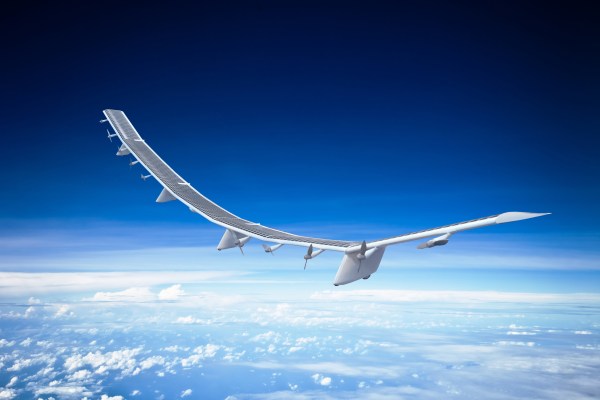Alphabet-owned Loon, the company that had been focused on delivering internet communications to remote areas via stratospheric balloons, has completed development work on a new payload for partner HAPSMobile, a subsidiary of SoftBank that’s building high-altitude solar-powered uncrewed aircraft. The two companies jointly adapted the communications technology that enables Loon’s balloons to beam communications networks to Earth for use on HAPSMobile’s drones, effectively turning them into high-flying mobile cell towers.
This is the result of a strategic partnership that the two companies announced back in April of last year, but an important step because it means that Loon’s technology will get its first functional tests on vehicles other than its balloon-based platform. The HAWK30 aircraft that HAPSMobile developed is a solar-powered electric aircraft that flies at speeds of over 100 km/h (around 60 mph) in the stratosphere (with an operating altitude of around 65,000 feet), which is much faster than Loon’s balloons, which meant adapting the payload to perform at these speeds. Part of that customization included making much more responsive the antenna used to beam the LTE connectivity to devices on the ground, allowing them to rotate quickly to maintain the best possible connection.
Loon and HAPSMobile say their communications technology can provide connections between devices as far as 700 km (435 miles) apart, with data transfer speeds reaching as high as 1Gpbs. HAPSMobile’s goal with the HAWK30 project is to expand the scope of coverage versus terrestrial cell towers, as their high-altitude position can cover a much larger surface area versus even the tallest cell towers. In fact, the company notes that just 40 of its aircraft could provide coverage to the entirety of Japan, versus “tens of thousands of existing terrestrial base stations.” Plus, fewer areas would be considered out-of-range as a result of inhospitable terrain or difficult to reach areas in terms of infrastructure installation.
For Loon, this is a significant expansion of their current operating model, providing another path to revenue that includes adapting their communications technology for use on different types of aircraft and delivery models. It’s yet another example of the type of commercial partnerships available to the company, even as it ramps up its existing balloon-based deployment plans with partners including Telefonica and others.
